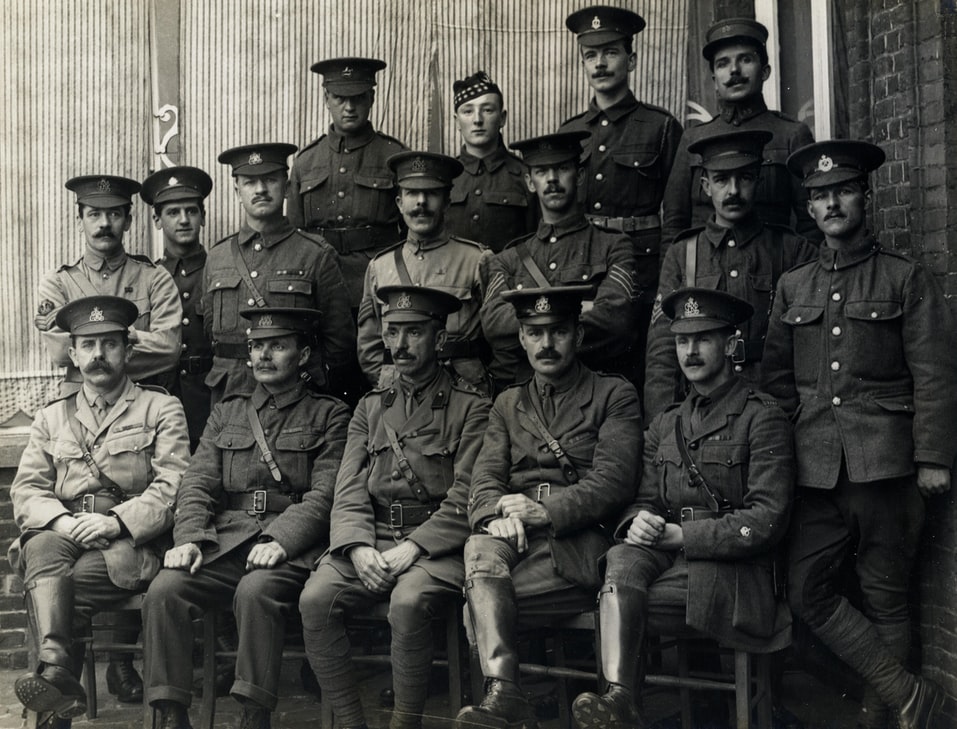The unseen enemy: differing perspectives from the front line
Today, those aiding patients on the brink of death are often described as ‘front line’ staff. They bravely contribute in battling the pandemic. I was motivated to research the differing perspectives of those during another crisis: the First World War. Although a century apart, both crises raised severe global challenges for society. Yet every crisis can evoke differing responses, despite the fact that the individuals involved generally experience similar emotions and witness moving sights.
In this article, I have chosen to explore the differing responses of two WWI painters, Otto Dix and Paul Nash. Both of these artists experienced the same conflict, witnessed very similar battlefield scenes and fought in near-identical geographical sectors of the Western Front – albeit as enemies on opposing sides. Yet their respective artistic reactions and output largely diverged from one another.
Otto Dix was born in Germany in 1891 into modest socio-economic circumstances, and Paul Nash was born in 1889 into a reasonably prosperous family that came of traditional English farming stock.
A key difference between these two artists is that Nash was officially designated as a ‘war artist’ by the British Government and was formally commissioned by the military authorities to paint wartime scenes. But, by contrast, Dix did not enjoy any equivalent official German war artist accreditation.
Nash captures the ghostly impact upon the shell-pitted, almost lunar, landscape of craters over which the battle had been fought
Whereas Dix’s oeuvre took on elements of German Expressionism and then Surrealist-Dadaist styles, before evolving into a more traditional Old Master interpretation, Nash reflected some Vorticist and Futurist influences, before also briefly experimenting with Surrealist imagery and Symbolism.
Today, hundreds of thousands of young volunteers are willingly opting to assist COVID-19 patients. At a similar age at the outbreak of WWI in 1914, Dix voluntarily enlisted in the ranks and was assigned to a field artillery regiment in Dresden. In 1915, he trained as a heavy machine-gunner and by autumn had volunteered for service on the Western Front, where he took part in the Champagne campaign. By 1916, he was participating in heavy fighting during the Battle of the Somme, before being transferred to Flanders. He later saw active service on the Eastern Front in 1917, before arriving back in France for the Ludendorff Offensive of 1918.
Whereas Dix was completely immersed in close hand-to-hand combat, vicious trench warfare and major military engagements for almost the entire duration of WWI, Nash did not directly experience anything like that level of fighting. However, although he escaped the bloodiest battles and only encountered periodic flare-ups in the conflict, Nash witnessed intensive artillery bombardments, especially on his return to the Front in late 1917.
The most frightful nightmare of a country
Nash did not directly participate in the Battle of Passchendaele, but he did arrive just in time to sketch its immediate aftermath. In Wounded at Passchendaele (1918), Nash captures the ghostly impact upon the shell-pitted, almost lunar, landscape of craters over which the battle been had fought before his arrival. Left emotionally scarred by seeing the horrendous devastation inflicted upon the rural landscape by Passchendaele, he described this desolate panorama as ‘the most frightful nightmare of a country’.
Dix’s art has become emblematic of the horrific damage that WWI wreaked upon individuals and their physical surroundings, while also capturing the post-war decadence and political turmoil of Weimar Germany. Conversely, Nash is generally perceived as a consummate landscape artist, whose response to WWI was to demonstrate its direct consequence upon the natural world – and the devastating, indirect effect it had upon mankind.
Their creative styles evolved through what they witnessed on the front line and thereafter
Initially, at the war’s outset, Dix presented himself in oils as the archetypal Nietzschean Übermensch, painting himself as a shaven-headed recruit brimming with warrior-like qualities. By 1915 on the Western Front, Dix no longer portrayed himself using mythic-heroic imagery. Instead, as evident in his Expressionistic Self-Portrait as Practice Target, Dix sarcastically labels his self-image as a Schießscheibe (practice-target), depicting himself as he might appear to an enemy sniper.
Both Dix and Nash underwent life-changing experiences in WWI which heavily influenced their artistic output during, and after, the conflict, yielded quite different artistic results. Their creative styles evolved through what they witnessed on the front line and thereafter.
It will be fascinating to observe the equivalent output of ‘front line’ art generated by contemporary artists after this tumultuous COVID-19 pandemic period.

Comments